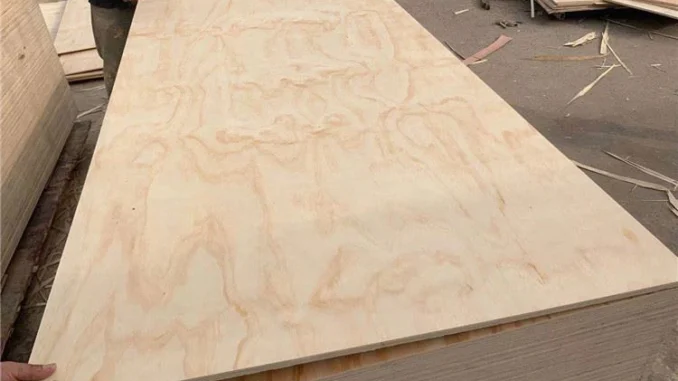
Plywood is one of the most commonly used building materials in the construction and woodworking industries. Its layered structure and versatility have made it a favorite for a range of projects, from large-scale construction to small DIY tasks. When discussing plywood, a term that frequently comes up is BC plywood. But what is BC plywood? Why is it so popular, and how does it differ from other types of plywood?
In this article, we will thoroughly explore what BC plywood is, what it is made of, its grading system, and its many uses. By the end, you’ll have a detailed understanding of BC plywood, enabling you to make informed choices about when and where to use it in your projects.
What is BC Plywood?
BC plywood is a specific type of plywood that is defined by the grading of its two visible sides – the «B» and the «C» sides. These grades are not just arbitrary labels, but rather they reflect the quality and appearance of the plywood. The “B” side refers to the higher-quality, smoother face of the plywood, while the “C” side has more imperfections and rougher characteristics. The main difference between BC plywood and other grades lies in these surface qualities, which ultimately determine its use in various applications.
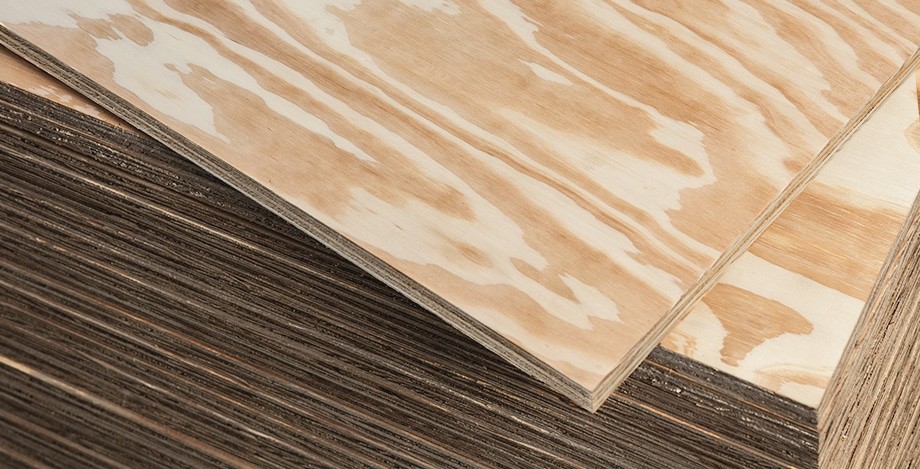
What Does BC Stand for in Plywood?
BC refers to the grading of the two faces of the plywood sheet. The «B» face is the side with the best finish, free from major defects like visible knots, holes, or cracks. It has a relatively smooth texture and is generally considered visually appealing. On the other hand, the «C» face is of lower quality, featuring more visible defects, imperfections, and rough textures. These imperfections don’t affect the plywood’s structural integrity, but they do impact its aesthetic value.
BC plywood is typically used when a balance between performance and appearance is needed. It is not as refined as AC plywood, where both faces are high quality, but BC plywood offers good quality at a more affordable price point. This makes BC plywood suitable for a variety of uses where appearance is not the most important factor but strength and durability are.
The Grading System of BC Plywood
The grading system is essential for understanding BC plywood and its suitability for specific tasks. The grading system of plywood takes into account the quality of the veneer, the number and size of defects, and the general smoothness or roughness of the plywood faces. In the case of BC plywood, the “B” and “C” ratings are assigned based on these characteristics.
The “B” Grade
The «B» face of BC plywood is the higher-quality side, often used in applications where appearance is important, but a perfect finish is not essential. This side typically features only minor defects, such as small knots or very slight imperfections, and the surface is generally smooth. As a result, the «B» side of BC plywood is ideal for visible applications, such as when the plywood is used for furniture, interior panels, cabinetry, or shelving. In these instances, the «B» side provides a clean, refined look without the need for extensive sanding or finishing work.
While the «B» face is often used in visible applications, it is important to note that it still may not have the same pristine appearance as the «A» face of AC plywood, which is generally reserved for high-end applications.
The “C” Grade
The “C” face of BC plywood is rougher and typically has more visible defects. These imperfections may include larger knots, patches, and rough textures. The «C» side is not intended for decorative use but plays an important role in ensuring the structural integrity of the plywood. The «C» side is often hidden or used in situations where appearance is less important than strength and durability. As a result, BC plywood with a «C» face is frequently used in construction projects like subflooring, wall sheathing, and roofing, where the plywood’s strength is prioritized over its appearance.
Impact of the Grading System on BC Plywood’s Performance
The grading system directly affects the overall performance and suitability of BC plywood for various applications. The «B» face provides an aesthetically acceptable surface for interior applications that don’t require a perfect finish, while the «C» face provides structural stability and support in less visible areas. Understanding the grading system helps ensure that BC plywood is used appropriately, balancing aesthetics and strength based on the needs of a given project.
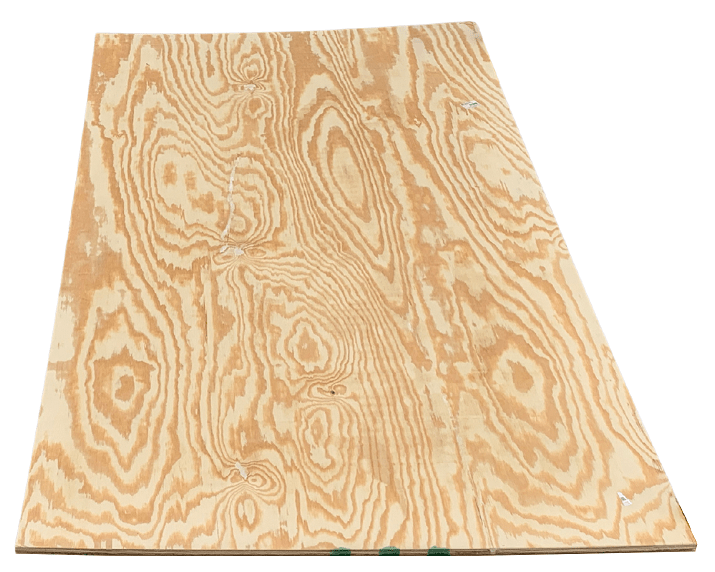
Manufacturing Process of BC Plywood
The process of creating BC plywood involves several steps, starting from raw timber to the finished product. The manufacturing process ensures that the plywood is strong, durable, and of consistent quality. Let’s explore this process in more detail.
Selection of Raw Timber
The first step in producing BC plywood is selecting the raw timber, which is usually softwood or hardwood, depending on the desired qualities of the final product. The timber is carefully chosen for its grain patterns and general quality, as these factors will influence the plywood’s performance.
Veneer Preparation
Once the raw timber is selected, it is sliced into thin sheets known as veneers. These veneers are typically about 1/16th of an inch thick, though the exact thickness can vary depending on the specifications for the plywood. The veneers are carefully inspected for defects, and only the highest quality veneers are chosen for the «B» side, while the lower-quality veneers are used for the «C» side.
Adhesive and Bonding
To create a solid, durable sheet of plywood, the individual layers of veneer are bonded together using strong adhesives. The most common adhesives used in plywood manufacturing are urea-formaldehyde, phenolic, or melamine-based adhesives, depending on the intended use. These adhesives ensure that the veneers are securely bonded together, creating a single, cohesive piece of plywood. In BC plywood, waterproof adhesives are often used to improve the plywood’s ability to resist moisture, especially if it will be used for exterior or high-moisture applications.
Pressing and Layering
After the veneers are bonded with adhesive, they are pressed together under high pressure and heat. This pressing process ensures that the veneers are securely attached to one another and that the plywood remains flat and stable. The number of layers of veneer depends on the thickness of the plywood, with thicker sheets requiring more layers. After pressing, the plywood is allowed to cool and harden before being cut to size.
Cutting and Inspection
Once the plywood has cooled and hardened, it is cut into standard sizes. During this phase, each sheet is inspected for defects such as warping, voids, or delamination. Only sheets that meet the required standards for quality are sent out for use in construction or other applications. BC plywood is typically available in various thicknesses, ranging from 1/8 inch to several inches, depending on the intended application.
Key Features of BC Plywood
BC plywood has several key features that make it suitable for a wide variety of uses. These features include its strength, durability, versatility, appearance, and resistance to moisture.
Strength and Durability
One of the primary advantages of BC plywood is its strength. The layered construction of plywood makes it highly resistant to bending, warping, or splitting, which is essential for structural applications. The cross-grain layering process ensures that the plywood has high tensile strength and can withstand significant forces, making it suitable for use in construction projects like flooring, roofing, and wall sheathing.
In addition to its structural strength, BC plywood is durable and can stand up to everyday wear and tear. The bonded layers create a product that is resistant to splitting, cracking, and general damage, which is why BC plywood is used in both structural and aesthetic applications.
Appearance
The «B» side of BC plywood has a smooth, relatively defect-free surface that is suitable for visible applications. While it may not be as flawless as higher-grade plywood, the «B» face offers an acceptable level of quality for most projects. The «C» face, on the other hand, is rough and less aesthetically pleasing, but still plays a crucial role in maintaining the overall strength and stability of the plywood.
When considering BC plywood for a project, it’s important to take the appearance of both sides into account. If the «C» side will be visible, additional finishing work may be required to improve its appearance.
Flexibility
Another key feature of BC plywood is its flexibility. It can be easily cut, shaped, and manipulated to fit a wide range of project requirements. Whether you’re creating intricate furniture designs or building simple structures, BC plywood can be adapted to suit your needs. The flexibility of BC plywood makes it an excellent choice for both professional contractors and DIY enthusiasts.
Moisture Resistance
BC plywood is designed to be resistant to moisture, though it should still be treated and sealed if used in areas where it will be exposed to significant water or high humidity. While it may not have the extreme moisture resistance of marine plywood, BC plywood can perform well in outdoor or damp environments when properly treated. Sealing the plywood with water-resistant finishes or coatings can enhance its durability and longevity in such conditions.
Sustainability
When sourced responsibly, BC plywood can be considered an eco-friendly building material. Many manufacturers use sustainable forestry practices to ensure that the timber used in plywood production is harvested responsibly. Additionally, plywood is a renewable material, and advancements in production processes are continually making BC plywood more environmentally friendly.
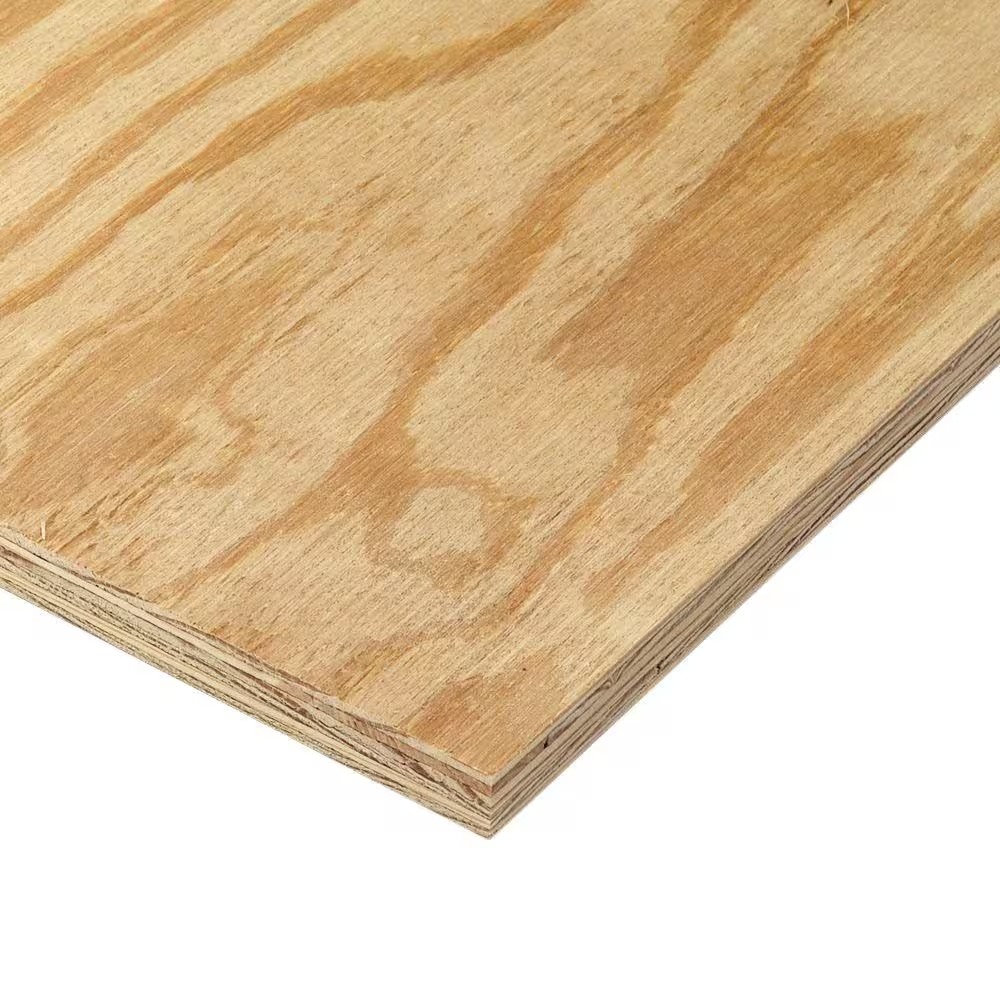
Benefits of BC Plywood
BC plywood offers several benefits that make it an attractive choice for a wide range of applications. These include cost-effectiveness, versatility, strength, and low maintenance.
Cost-Effectiveness
One of the main advantages of BC plywood is its cost-effectiveness. The combination of durability and reasonable pricing makes BC plywood an excellent value for both contractors and DIYers. By offering a reliable product at a more affordable price than higher-grade plywood, BC plywood helps to reduce material costs while still providing a product that can handle a variety of tasks.
Versatility
BC plywood is incredibly versatile, with a wide range of uses in both structural and decorative applications. From subflooring and wall sheathing to furniture and cabinetry, BC plywood can handle a broad spectrum of project types. This versatility allows it to be used in both commercial and residential construction as well as in DIY projects.
Strong and Sturdy
BC plywood is built to last. Its layered structure provides strength and durability, which is essential for heavy-duty applications. It’s strong enough for structural work yet flexible enough for creative, aesthetic uses.
Low Maintenance
Unlike other materials that require constant upkeep, BC plywood is relatively low-maintenance, especially when properly sealed and protected. With the right care, BC plywood can maintain its strength and appearance for many years, reducing the need for frequent repairs or replacements.
Available in Various Thicknesses and Sizes
BC plywood is available in a variety of sizes and thicknesses, making it adaptable to different projects. Whether you need a thin sheet for cabinetry or a thicker sheet for structural purposes, BC plywood is available to meet the specific needs of your project.
Applications of BC Plywood
BC plywood is a highly versatile material that can be used in a wide range of applications. From construction projects to decorative pieces, BC plywood’s combination of strength and appearance makes it ideal for both structural and aesthetic uses. Let’s take a closer look at some of the most common applications for BC plywood.
Construction Applications
One of the most widespread uses of BC plywood is in the construction industry. The material’s strength and stability make it a great choice for various structural elements. BC plywood is commonly used for:
- Wall Sheathing: BC plywood is ideal for covering the exterior of buildings. The «B» face, with its relatively smooth finish, provides a decent appearance, while the «C» face adds durability and strength.
- Subflooring: The plywood’s strength makes it perfect for use as a subfloor, providing the necessary base for flooring materials like hardwood, tile, or carpet.
- Roofing: BC plywood is also widely used in roofing projects, where its durability and resistance to wear and tear make it a reliable choice for underlayment.
- Decking: Due to its moisture resistance and strength, BC plywood is often used for building outdoor decks, providing a sturdy foundation for flooring materials.
Interior Projects
BC plywood is not just for structural use — it also finds a place in interior projects where an attractive, yet functional material is required. Some common interior applications include:
- Furniture Making: The «B» face of BC plywood provides an acceptable level of aesthetic appeal for furniture like tables, chairs, and cabinets. It is a popular choice for DIY projects and custom furniture-making due to its ease of cutting and finishing.
- Cabinetry and Shelving: Many homebuilders and woodworkers use BC plywood to create strong, durable cabinets and shelving units. The material offers a good balance between performance and cost.
- Interior Panels: BC plywood is also used for interior paneling, where a visually appealing finish is desired but where perfect smoothness is not a critical factor.
Outdoor Uses
BC plywood’s versatility extends to outdoor applications, as it can perform well in many outdoor environments, especially when sealed or treated properly. Common outdoor uses include:
- Fencing: BC plywood is used for creating strong and durable fencing. Its balance of strength and affordability makes it a practical choice for backyard or boundary fences.
- Garden Structures: Whether you’re building a shed, a trellis, or a greenhouse, BC plywood can be used for these types of outdoor structures, providing a reliable material that holds up well under the elements.
- Decking and Patios: If you’re building a deck or patio, BC plywood can provide the foundational layer that is both strong and resistant to damage from moisture, making it an excellent choice for these types of outdoor projects.
Heavy-Duty Applications
In addition to residential and decorative uses, BC plywood is also utilized in heavy-duty applications where strength and reliability are essential. These include:
- Packaging and Shipping Crates: The durability and strength of BC plywood make it a preferred material for building crates used for shipping heavy goods.
- Pallets: BC plywood is often used for constructing pallets for transporting goods. It offers a stable and reliable material that can bear heavy loads without breaking down.
- Industrial Applications: BC plywood is also used in industrial environments for applications such as machinery panels, factory flooring, and other heavy-duty uses where durability is paramount.
Specialized Applications
Beyond the common applications already mentioned, BC plywood can also be used in more specialized fields. These include:
- Boat Building: While not as waterproof as marine-grade plywood, BC plywood can still be used for constructing boats and other water-related structures, provided it’s sealed properly to protect it from water exposure.
- Craft and DIY Projects: For DIY enthusiasts, BC plywood serves as an excellent material for a variety of smaller craft projects, such as making wall art, creating model kits, or building simple storage solutions.
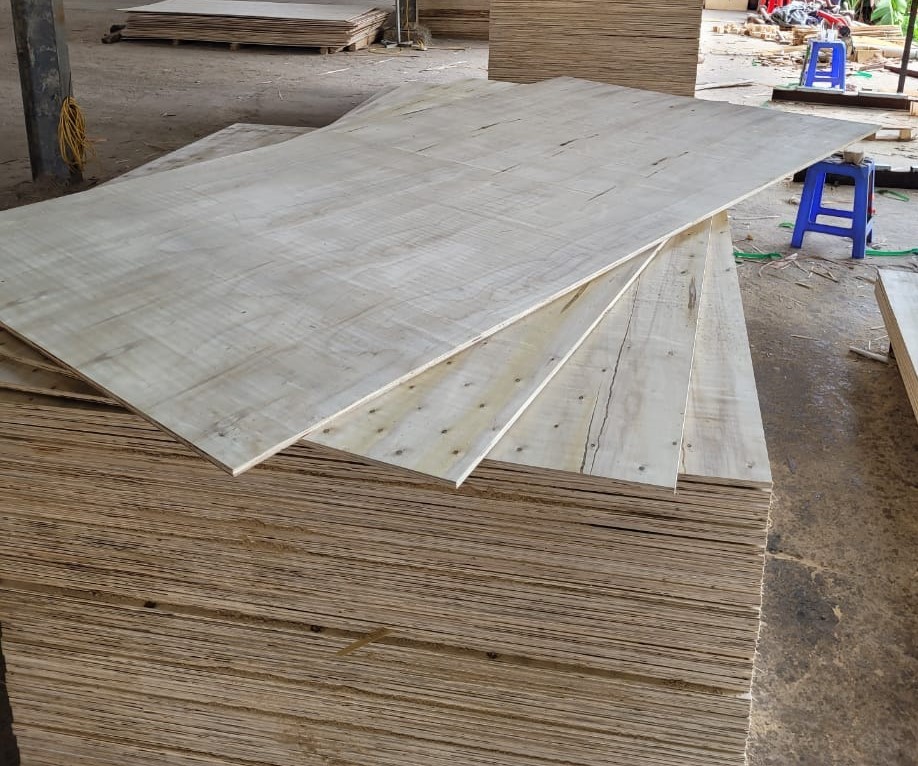
BC Plywood vs Other Types of Plywood
When selecting plywood for a project, it’s essential to understand how BC plywood compares to other types of plywood. Different grades of plywood are available, each with its unique characteristics. Let’s look at how BC plywood stacks up against some common alternatives.
BC Plywood vs AC Plywood
One of the most common comparisons is between BC plywood and AC plywood. Both of these plywood types are popular in the construction and woodworking industries, but there are significant differences between them:
- Grading: AC plywood features an «A» grade for the front and «C» grade for the back. The «A» face is higher quality than the «B» face of BC plywood, meaning AC plywood has a more aesthetically pleasing, smooth, and defect-free surface.
- Cost: AC plywood is typically more expensive than BC plywood due to its higher-quality surface. If appearance is critical, AC plywood may be the better choice, but BC plywood provides an affordable alternative that still offers great structural integrity.
- Uses: AC plywood is generally used in applications where both sides will be visible, such as in cabinetry or high-end furniture. BC plywood, on the other hand, is typically used for structural work or projects where the «C» face will be hidden or less visible.
BC Plywood vs CDX Plywood
Another common comparison is between BC plywood and CDX plywood, which is another type of exterior-grade plywood. Here’s how they compare:
- Grading: CDX plywood features a «C» face on the front and a «D» face on the back. The «C» face is typically of higher quality than the «D» face, but overall, CDX plywood is generally considered a lower grade than BC plywood.
- Performance: Both types of plywood are designed for exterior use and can handle moisture exposure. However, BC plywood is considered more durable and reliable for outdoor projects because of the higher quality of its «B» face, which offers better resistance to wear and tear.
- Cost: CDX plywood tends to be less expensive than BC plywood, but it also has a lower quality finish. For projects where appearance is not a major concern, CDX plywood may be the better choice for cost-effectiveness.
BC Plywood vs Marine Plywood
While BC plywood can be used in outdoor applications, it is not as water-resistant as marine plywood. Marine plywood is specifically designed to withstand continuous exposure to water and moisture, making it ideal for boat building and other watercraft construction.
- Moisture Resistance: BC plywood has decent moisture resistance but is not designed for continuous water exposure like marine plywood. It can be used for outdoor structures if treated properly but is not a long-term solution for wet environments.
- Durability: Marine plywood is made with higher-quality veneers and waterproof adhesives, making it far more durable in water than BC plywood. However, BC plywood is still a solid choice for general outdoor use when sealed and maintained properly.
Pros and Cons of BC Plywood
| Pros | Cons |
|---|---|
| Affordable compared to higher-grade plywood options like AC and marine plywood. | The «C» face can have visible defects, making it less desirable for projects where both sides will be visible. |
| Strong and durable, making it suitable for both structural and decorative applications. | Not as water-resistant as marine plywood or other exterior-grade plywood options. |
| Versatile, with uses in construction, furniture, packaging, and more. | The quality of the «B» face is lower than higher-grade plywood like AC plywood. |
| Available in various thicknesses and sizes. | |
| Relatively low maintenance with proper care. |
Maintenance and Care for BC Plywood
To ensure that BC plywood continues to perform well over time, proper maintenance and care are necessary. While the material is relatively low-maintenance, there are steps you can take to extend its lifespan, particularly if it will be used outdoors or in high-moisture environments.
Sealing and Treatment
If you’re using BC plywood in outdoor applications, it’s crucial to seal the material to protect it from moisture. A high-quality water-resistant sealant can help prevent the plywood from warping or deteriorating over time. Additionally, if the plywood will be exposed to the elements, consider using a marine-grade sealant or outdoor wood finish to provide additional protection.
Handling and Storing
Proper handling and storage of BC plywood are essential to maintaining its integrity. When transporting plywood, take care to prevent it from being dropped or exposed to moisture. If you’re storing BC plywood for a long period, keep it in a dry area, elevated off the ground to prevent moisture absorption from the floor.
Regular Inspection
If BC plywood is used in construction or outdoor projects, regular inspection is crucial. Check for signs of moisture damage, warping, or delamination. Early detection can help prevent more significant issues down the line.
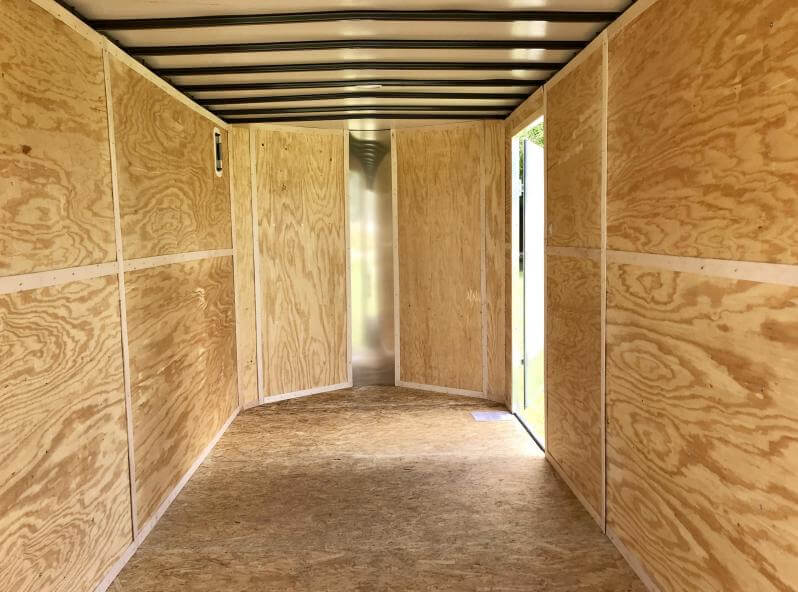
Challenges and Considerations
While BC plywood is an excellent material for a variety of applications, there are some challenges and considerations to keep in mind when working with it. These include potential drawbacks related to its appearance, moisture resistance, and handling.
Visible Imperfections on the «C» Face
One of the main challenges with BC plywood is the quality of the «C» face. The «C» side often has visible imperfections, such as knots, splits, or rough patches. While these imperfections do not affect the plywood’s structural integrity, they can be problematic for projects where both sides of the plywood will be visible.
If the «C» side will be exposed in your project, additional finishing or sanding may be required to improve its appearance. Alternatively, you may need to position the plywood in such a way that the «C» side is hidden or covered by other materials.
Susceptibility to Moisture Damage if Not Properly Sealed
Although BC plywood has some moisture resistance, it is not immune to water damage. If exposed to prolonged moisture without proper sealing or treatment, the plywood can warp, swell, or delaminate. This is especially important to consider if you are using BC plywood for outdoor or high-moisture applications.
To mitigate this risk, ensure that the plywood is treated with a waterproof sealant or finish. If used in areas exposed to rain or high humidity, it’s essential to reapply protective coatings periodically to maintain the plywood’s performance.
Weight and Suitability for Specific Applications
BC plywood, like most plywood products, can be relatively heavy compared to other materials. Depending on the thickness and size of the plywood, this can be a factor to consider, particularly for applications that require easy handling or transportation.
If you’re working on a large project or using BC plywood for decorative purposes, the weight may not be an issue. However, for projects where weight is a consideration — such as building mobile structures, furniture, or items that need to be easily lifted — the weight of BC plywood could be a limiting factor.
Environmental and Sustainability Considerations
While BC plywood can be sourced from sustainably managed forests, the environmental impact of plywood production is a key consideration. Plywood production can contribute to deforestation and environmental degradation if not sourced responsibly.
To ensure that the plywood you’re using is environmentally friendly, look for certifications such as the Forest Stewardship Council (FSC) or similar standards that guarantee the wood comes from sustainable sources. Additionally, some manufacturers are focusing on using eco-friendly adhesives and production methods, which can reduce the environmental footprint of BC plywood.
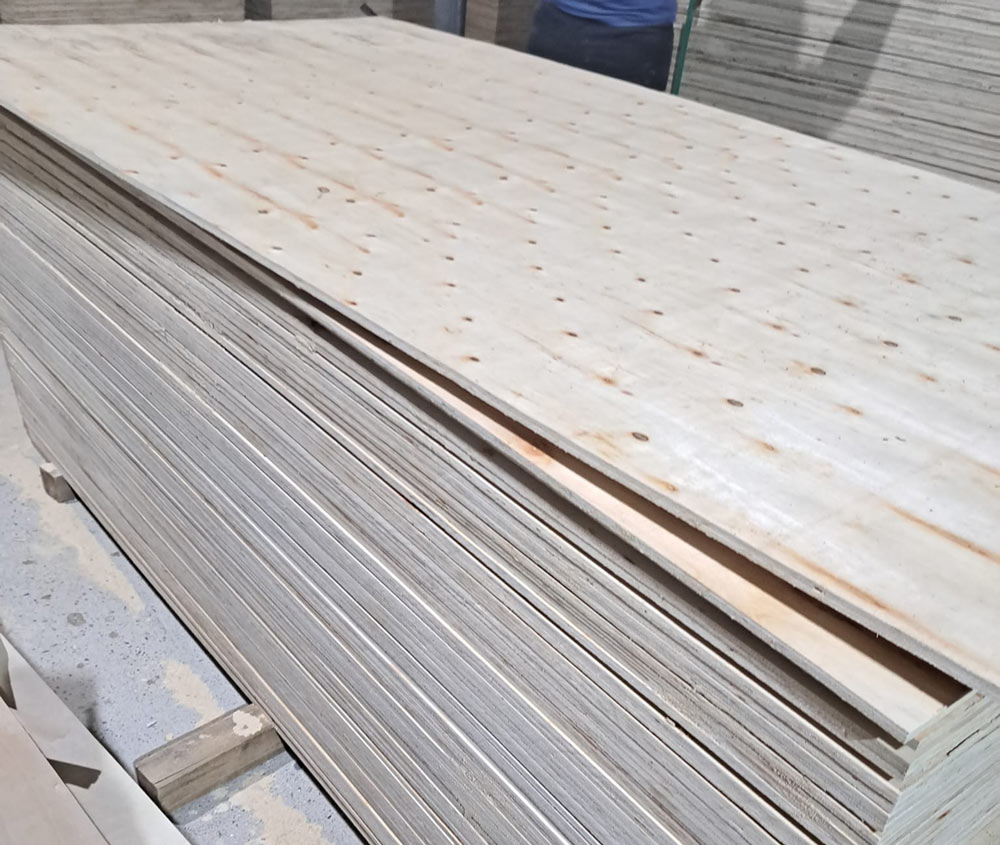
Cost and Availability
The cost of BC plywood varies depending on factors such as thickness, grade, and supplier. However, compared to higher-grade plywood options like AC or marine plywood, BC plywood tends to be more affordable, making it a popular choice for budget-conscious projects.
Pricing Comparison with Other Types of Plywood
The cost of BC plywood is typically lower than that of AC plywood because the «B» face is not as flawless as the «A» face in AC plywood. For structural projects where appearance is secondary, BC plywood offers a cost-effective solution while still maintaining adequate strength and durability.
When compared to marine plywood, BC plywood is also much more affordable. However, keep in mind that marine plywood has specialized properties, such as superior water resistance, that justify its higher price for certain applications, such as boat building or outdoor structures exposed to continuous moisture.
Factors Affecting the Cost of BC Plywood
The cost of BC plywood can vary depending on several factors, including:
- Thickness: Thicker sheets of plywood generally cost more than thinner ones. BC plywood is available in various thicknesses, ranging from 1/8 inch to several inches, depending on the intended application.
- Quality of Veneers: Higher-quality veneers used in BC plywood will increase its cost. If the plywood has fewer imperfections and more uniform layers, it will typically be priced higher.
- Manufacturer: Different manufacturers may offer BC plywood at varying price points, depending on their sourcing practices and production methods.
- Region and Availability: Prices for BC plywood can also fluctuate depending on regional supply and demand, as well as transportation costs associated with shipping the plywood from manufacturers to retailers.
Where to Purchase BC Plywood
BC plywood is widely available in hardware stores, lumber yards, and specialty building supply stores. It can also be purchased online through various suppliers. When buying BC plywood, it’s important to verify the quality of the material and ensure that it meets your specific project requirements.
Some suppliers offer custom-cut sizes, making it easier for DIYers or contractors to get the exact amount of plywood needed for their project. Additionally, you can often find BC plywood in pre-packaged bundles, which can provide cost savings for larger projects.
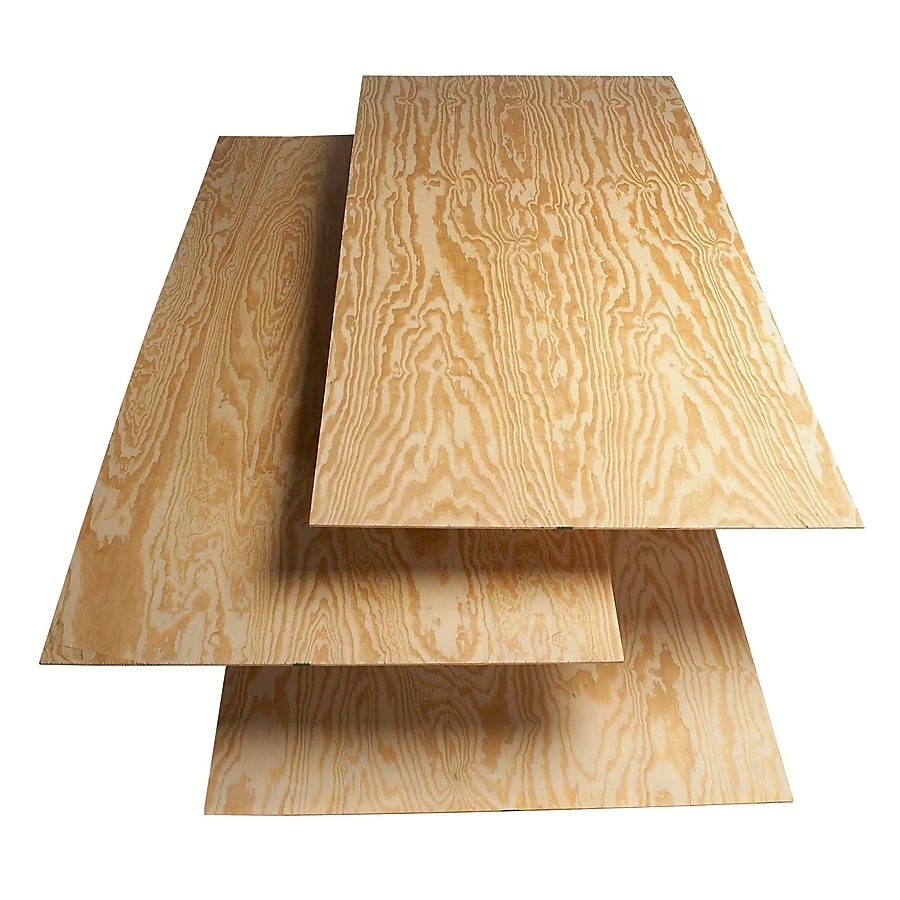
Future Trends and Innovations in BC Plywood
As demand for sustainable and eco-friendly materials continues to rise, BC plywood is evolving to meet the needs of environmentally conscious consumers. Innovations in production techniques, adhesives, and sustainable sourcing are paving the way for more eco-friendly and cost-effective versions of BC plywood. Let’s look at some of the future trends and innovations in this field.
Innovations in BC Plywood Production
One of the most significant trends in the plywood industry is the push toward more sustainable production methods. Manufacturers are increasingly using non-toxic adhesives and glues that reduce the environmental impact of plywood production. These adhesives can be formulated without harmful chemicals such as formaldehyde, making the plywood safer for indoor use and more environmentally friendly.
Additionally, there has been a growing interest in using alternative, renewable sources of wood for plywood production. This includes exploring options like bamboo, recycled wood fibers, and sustainably harvested wood from managed forests.
Eco-Friendly Practices and Certifications
As consumers become more aware of the environmental impact of their purchasing decisions, the demand for certified sustainable products like BC plywood has grown. The Forest Stewardship Council (FSC) certification is one of the most widely recognized sustainability certifications, ensuring that the wood used in plywood production is harvested responsibly and that the production processes are environmentally conscious.
Manufacturers that adopt sustainable sourcing practices and obtain eco-certifications are becoming more prevalent, making it easier for consumers to choose environmentally responsible products.
Market Trends and Growth in Demand
The popularity of BC plywood is expected to continue to grow, driven by its versatility, cost-effectiveness, and widespread use in both residential and commercial construction. The construction industry’s increasing focus on sustainable materials is also likely to drive the demand for eco-friendly BC plywood options.
Additionally, the growing DIY trend in home improvement and furniture-making projects is contributing to a surge in demand for plywood, including BC plywood. Homeowners and hobbyists are increasingly turning to BC plywood for its combination of quality and affordability.
Sustainable Sourcing and the Future of BC Plywood
As the construction and woodworking industries embrace sustainability, BC plywood is poised to play an essential role in this shift. With more emphasis on environmentally responsible sourcing, future trends suggest that BC plywood will become even more eco-friendly, with advancements in production methods and material sourcing.
Conclusion
In conclusion, BC plywood is a versatile and affordable material that plays a crucial role in both construction and decorative applications. Its combination of strength, durability, and moderate cost makes it an ideal choice for many different projects, from structural uses like subflooring and wall sheathing to furniture-making and cabinetry.
The grading system of BC plywood — where the «B» face is smooth and of higher quality, while the «C» face features visible imperfections — ensures that the material can be used in a wide range of applications, depending on whether appearance or strength is the priority. While BC plywood may not have the flawless finish of higher-grade plywood, its cost-effectiveness, durability, and versatility make it an excellent choice for both professionals and DIY enthusiasts alike.
As the demand for sustainable building materials grows, BC plywood is likely to continue evolving, with innovations in production methods and adhesives making it even more eco-friendly. Whether you’re working on a construction project, crafting furniture, or tackling a DIY home improvement task, BC plywood is a reliable material that can meet your needs and stand the test of time.
FAQs
Q1: Can BC plywood be used for outdoor furniture?
Yes, BC plywood can be used for outdoor furniture, but it should be properly sealed and treated to protect it from moisture and weather damage. While BC plywood offers some moisture resistance, additional protection will enhance its durability for outdoor use.
Q2: What is the difference between BC and AC plywood?
The key difference between BC and AC plywood lies in the grading of the faces. BC plywood has a «B» grade front face, which is of higher quality than the «C» back face, while AC plywood has an «A» front face that is smoother and of higher quality than the «B» face in BC plywood. BC plywood is generally more affordable than AC plywood.
Q3: How do you treat BC plywood for outdoor use?
To treat BC plywood for outdoor use, apply a water-resistant sealant or outdoor wood finish to both sides of the plywood. Reapply the finish periodically to maintain the plywood’s moisture resistance and prevent damage from the elements.
Q4: Is BC plywood suitable for heavy-duty applications?
Yes, BC plywood is strong and durable, making it suitable for heavy-duty applications such as subflooring, roofing, fencing, and packaging. However, if the plywood will be exposed to harsh conditions, proper sealing is essential to protect it from moisture and wear.
Q5: Can BC plywood be used for boat building?
While BC plywood can be used for boat building, it is not as water-resistant as marine-grade plywood. If you plan to use BC plywood for a boat, ensure that it is thoroughly sealed and treated to prevent water damage. Marine plywood is a better option for boats that will be exposed to constant moisture.